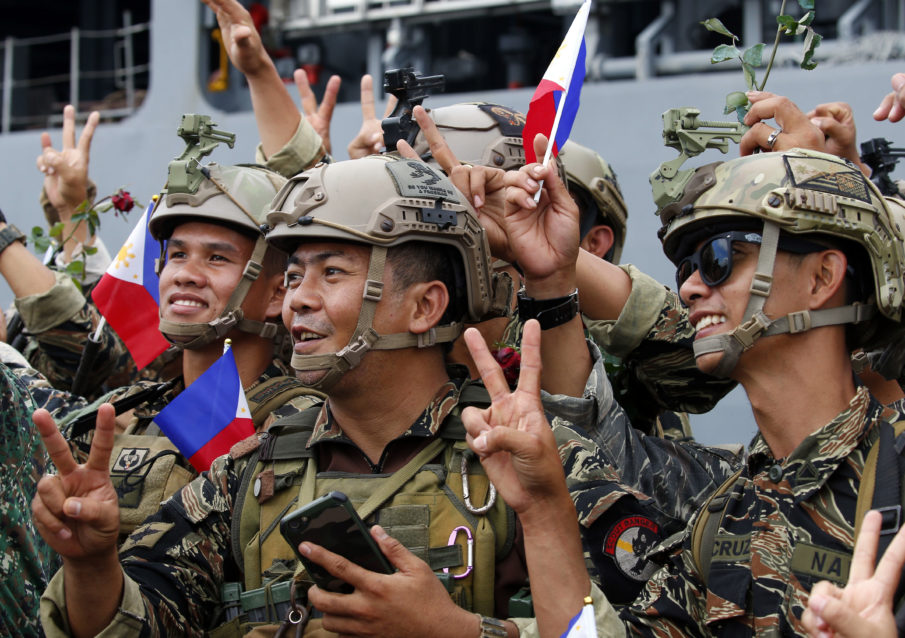
Last year, SOFREP paid a visit to the Philippine Special Operations Command located at Fort Magsaysay to conduct interviews with Scout-Rangers and Special Forces soldiers. The third unit present was the Light Reaction Regiment, a unit that tries to fly under the radar, their actions often attributed to other units in the press. These gentlemen had to be interviewed in a more informal setting. The Philippine Special Operations Command harnesses the power of these three units to work together, a must when dealing with the myriad of threat groups that their country faces in extremely challenging terrain, a urban and jungle archipelago consisting of thousands of islands.
As well meaning and as skillfully executed as Philippine SOCOM was, there were some glaringly obvious omissions from the command. The Armed Forces of the Philippines have been greatly influenced by the United States military, and sure enough, American Special Forces advisors were at Fort Magsaysay the day SOFREP visited. America’s SOCOM was created in the wake of the 1980 Operation Eagle Claw, a failed mission to rescue US citizens held hostage in Iran as well as Operation Urgent Fury, the successful invasion of Grenada in 1983. Both combat operations exposed interoperability issues, particularly between the separate services of the military.
In order to conduct successful Special Operations missions, America had to get a whole lot better at working in a joint environment. The result was the creation of SOCOM in 1987, established by the Nunn-Cohen amendment and the Goldwater-Nichols Act. It was a pivotal moment of US Special Operations which brought Army units like Delta Force, the Ranger Regiment, and Special Forces under the same roof as Navy SEALs and Special Boat Teams, along with Air Force aviation assets, and many years later Marine Corps Special Operations.
The omission in Philippine SOCOM was the other branches of service, it was a SOCOM that included only the Army. In interviews with Philippine SEALs, who fall under NAVSOG, they expressed a strong desire to join a joint services SOCOM that included them. The SEALs had been working jointly with their Army counter-parts in combat for many years and wanted to make the union official. Virtually all of the Army SOF soldiers interviewed reflected the same point of view. The time had come.
The creation of a AFP-wide SOCOM was a long standing dream of General Danilo Pamonag who previously commanded the Light Reaction Regiment and the previous Army-only version of SOCOM. Pamonag always deeply believed in the importance of joint operations and the power of mutually supporting Special Operations units. The development took some time, but that dream has finally come to fruition with the previous Army SOCOM now disbanded and all assets being transferred to the new AFP SOCOM.
Perhaps the most important and practical development for the troops on the ground is a single streamlined logistical network. In conversations with the lead logistician officer at SOCOM last year, he explained how incredibly difficult it was to keep all of the units in the field supplied due to him having limited aircraft which had to fly across the entire stretch of the Philippine archipelago. Combat re-supply will now be far easier with the various services working in conjunction with one another. An AFP wide SOCOM will also greatly streamline the weapons and equipment procurement process for all the units involved.
In years past, some Philippine Special Operations soldiers have felt that they are over-employed, being used to resolve any and all situations. Others have felt that they are mis-employed, used in a manner not consistent with their training, capabilities, and mission. AFP SOCOM will help correct this. It will also mean that Philippine SOF will now be commanded by a higher ranking General, one who has more clout to compete for resources within the Armed Forces.
“Overall, I think it is high time we do this and it is an efficient way of improving our capabilities as a force,” a Philippine Special Operations officer told SOFREP when asked about this new development.
[Featured Image: Philippine Navy Special Operations Group, who took part in the battle against Muslim militants in the besieged city of Marawi in southern Philippines, flash the “V” sign upon disembarking from the Philippine Navy amphibious ship BRP Tarlac upon arrival Monday, Oct. 30, 2017 in Manila, Philippines. Philippine troops begun scaling down their forces following the liberation of Marawi from the IS-linked militants. AP Photo/Bullit Marquez]
https://sofrep.com/102034/the-philippines-stands-up-a-true-special-operations-command-socom-for-the-first-time/

No comments:
Post a Comment
Note: Only a member of this blog may post a comment.